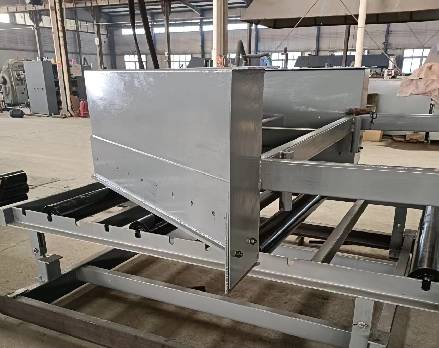 Afrikaans
Afrikaans  Albanian
Albanian  Amharic
Amharic  Arabic
Arabic  Armenian
Armenian  Azerbaijani
Azerbaijani  Basque
Basque  Belarusian
Belarusian  Bengali
Bengali  Bosnian
Bosnian  Bulgarian
Bulgarian  Catalan
Catalan  Cebuano
Cebuano  Corsican
Corsican  Croatian
Croatian  Czech
Czech  Danish
Danish  Dutch
Dutch  English
English  Esperanto
Esperanto  Estonian
Estonian  Finnish
Finnish  French
French  Frisian
Frisian  Galician
Galician  Georgian
Georgian  German
German  Greek
Greek  Gujarati
Gujarati  Haitian Creole
Haitian Creole  hausa
hausa  hawaiian
hawaiian  Hebrew
Hebrew  Hindi
Hindi  Miao
Miao  Hungarian
Hungarian  Icelandic
Icelandic  igbo
igbo  Indonesian
Indonesian  irish
irish  Italian
Italian  Japanese
Japanese  Javanese
Javanese  Kannada
Kannada  kazakh
kazakh  Khmer
Khmer  Rwandese
Rwandese  Korean
Korean  Kurdish
Kurdish  Kyrgyz
Kyrgyz  Lao
Lao  Latin
Latin  Latvian
Latvian  Lithuanian
Lithuanian  Luxembourgish
Luxembourgish  Macedonian
Macedonian  Malgashi
Malgashi  Malay
Malay  Malayalam
Malayalam  Maltese
Maltese  Maori
Maori  Marathi
Marathi  Mongolian
Mongolian  Myanmar
Myanmar  Nepali
Nepali  Norwegian
Norwegian  Norwegian
Norwegian  Occitan
Occitan  Pashto
Pashto  Persian
Persian  Polish
Polish  Portuguese
Portuguese  Punjabi
Punjabi  Romanian
Romanian  Russian
Russian  Samoan
Samoan  Scottish Gaelic
Scottish Gaelic  Serbian
Serbian  Sesotho
Sesotho  Shona
Shona  Sindhi
Sindhi  Sinhala
Sinhala  Slovak
Slovak  Slovenian
Slovenian  Somali
Somali  Spanish
Spanish  Sundanese
Sundanese  Swahili
Swahili  Swedish
Swedish  Tagalog
Tagalog  Tajik
Tajik  Tamil
Tamil  Tatar
Tatar  Telugu
Telugu  Thai
Thai  Turkish
Turkish  Turkmen
Turkmen  Ukrainian
Ukrainian  Urdu
Urdu  Uighur
Uighur  Uzbek
Uzbek  Vietnamese
Vietnamese  Welsh
Welsh  Bantu
Bantu  Yiddish
Yiddish  Yoruba
Yoruba  Zulu
Zulu Understanding the Functionality of Take-Up Pulleys in Conveyor Systems
Understanding the Conveyor Take-Up Pulley An Essential Component in Conveyor Systems
In the realm of material handling, conveyor systems play a crucial role in the efficient transport of goods, raw materials, and products across various industries. Among the myriad components that make up these systems, the conveyor take-up pulley stands out as a vital element that ensures the reliable operation of the conveyor belt.
The Role of the Conveyor Take-Up Pulley
The primary function of the take-up pulley is to maintain proper tension within the conveyor belt. A conveyor belt needs to operate under optimal tension to prevent slippage, wear, and damage. Without adequate tension, the belt may sag, which can lead to misalignment, increased friction, and ultimately premature failure of the belt and its components.
Take-up systems can be either manual or automatic. Manual take-up systems require an operator to adjust the position of the pulley as the belt wears, while automatic systems utilize mechanisms such as hydraulic or spring-loaded tensions to maintain the appropriate tension dynamically. Regardless of the method, the take-up pulley is integral to the longevity and efficiency of the conveyor system.
Components of a Take-Up System
A typical take-up system consists of several components, including
1. Take-Up Pulley The pulley itself, which serves as the point where tension is adjusted. 2. Frame The structure that supports the take-up pulley and allows for its movement. 3. Adjustment Mechanism This could include hand cranks, hydraulic cylinders, or spring mechanisms that facilitate the adjustment of belt tension. 4. Tensioning Device This element, often a weight or spring, applies the necessary force to ensure the belt remains taut.
Importance of Proper Tension Maintenance
Maintaining the correct tension in a conveyor belt is critical for several reasons
conveyor take up pulley

- Prevention of Slippage Insufficient tension can cause the belt to slip, which interrupts the flow of materials and can even lead to damage to the belt or the machine. - Reduction of Wear and Tear A properly tensioned belt minimizes the friction between the belt and other components, which reduces wear and extends the lifespan of both the belt and the conveyor system. - Improved Efficiency An optimally tensioned belt will run smoothly, increasing overall system efficiency and reducing downtime.
Factors Influencing Tension Requirements
Several factors influence the required tension for a conveyor belt, including
- Belt Type and Material Different belts have varying elastic properties and may require different tension levels. - Load Weight Heavier loads exert more force on the belt, necessitating higher tension to accommodate this weight. - Environmental Conditions Temperature and humidity can also affect the material properties of the belt, influencing the necessary tension for optimal operation.
Troubleshooting Common Issues
Understanding how to troubleshoot and adjust the take-up pulley is essential for maintaining an efficient conveyor system. Common issues include
- Belt Slippage This may indicate insufficient tension. Adjusting the take-up pulley could resolve the issue. - Belt Wear If the edges of the belt show excessive wear, it may be misaligned or improperly tensioned. Regular inspections should be conducted to address these problems proactively. - Noisy Operation Unusual noises can signal that components are not functioning correctly, often due to inadequate tension or misalignment.
Conclusion
The conveyor take-up pulley may seem like a simple component within the complex system of material handling, but its role is invaluable. By maintaining proper tension and facilitating smooth operation, this component contributes significantly to the efficiency and durability of conveyor systems. Understanding the mechanics of the take-up pulley and its importance can help operators and engineers ensure optimal performance, reduce wear, and extend the lifespan of their conveyor systems. As industries continue to evolve and demand higher efficiency, the significance of such components will only grow, marking them as essential to successful material transport operations.
-
Revolutionizing Conveyor Reliability with Advanced Rubber Lagging PulleysNewsJul.22,2025
-
Powering Precision and Durability with Expert Manufacturers of Conveyor ComponentsNewsJul.22,2025
-
Optimizing Conveyor Systems with Advanced Conveyor AccessoriesNewsJul.22,2025
-
Maximize Conveyor Efficiency with Quality Conveyor Idler PulleysNewsJul.22,2025
-
Future-Proof Your Conveyor System with High-Performance Polyurethane RollerNewsJul.22,2025
-
Driving Efficiency Forward with Quality Idlers and RollersNewsJul.22,2025





























